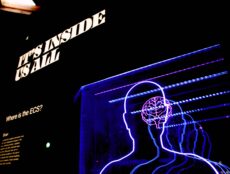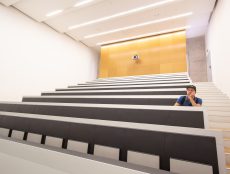
Over the past decades, we’ve observed the field of higher education undergo some major changes. Yet, despite all the positive changes that have been taking place, even in 2021, we can still say that, all in all, our educational system is still overly standardized. This fact alone proves how outdated it is.
Top 6 High Ed Trends That Are Outdated in 2021
So, what exactly makes the traditional higher education system outdated? Let’s look at the top six things that might be holding us back from positive change:
1. Huge Amounts of Written Assignments
Students receive tons of assignments that have to be done at home, but is it still as effective as we believe? Maybe not.
Specialists continue to debate the real benefits of homework and how much should be assigned. While you’d be hard pressed to find an education researcher who believes students shouldn’t do any homework, many believe that too much can be harmful. Although it is meant to help students learn, too much fosters additional stress and makes students turn to other means that do not necessarily uphold their academic integrity. Unable to cope with a huge amount of homework, many students pay their peers or go to essay writing services asking, “Please, type my essay.”
Finding the sweet spot of assigned homework can help your students learn more efficiently.
2. Academic Standards, Grades, and Tests
Speaking of the most common outdated trends in higher education, it’s impossible not to mention grades, tests, and standards. This is something that angers many in the educational system. But, at the same time, this trend is so deeply-rooted, that despite our indignation, there is nothing we can do about it.
Today, it became absolutely clear that academic standards, grade-based assessments, and tests aren’t quite as good as we believed they were for decades. The key problem is that all these standards are used to generalize education and define a common “average” framework that everyone should fit into.
3. Uniforms and Dress Codes
In today’s world of inclusivity and diversity, it is hard to believe that there are still some rules left aimed at suppressing one’s individuality. College uniforms and strict dress codes, though, seem to do just that.
No matter how odd this may sound, in the 21st century, there are still some higher ed facilities that dictate students how to dress for school. In the US, the issue with uniforms might not be as pressing as in some other countries, let’s say Japan. But, strict dress codes can be found in quite a few schools.
But is this necessarily a bad thing? There are both pros and cons. Thus, it’s up to you to decide whether it is a bad or a good trend, but, in any case, most of you should agree that it does look a bit outdated in the modern world.
4. Textbooks
For most of us, textbooks have been inseparable companions throughout our entire academic path. Starting from early childhood, we use books as the ultimate source of information, and this trend still prevails in the higher education facilities as well.
Although there is absolutely nothing wrong with using textbooks in college, you should agree that it is indeed getting somewhat obsolete. Today, when we have so much technology and plenty of opportunities, why would we continue using such outdated tools?
It’s worth noting that, according to research, physical textbooks do have a positive influence on education. This is probably the primary reason why using them is still a common trend. However, it is also worth saying that in the 21st century, too many textbooks involved in the learning process are just too boring. Thus, they don’t work the same way they used to anymore.
5. Unhealthy Cafeteria Food
Yes, it won’t be a secret that most of us wouldn’t mind grabbing a taco, burger, a bag of chips, or a slice of pizza during a lunch break in college (and schools as well). Unhealthy food and snacks have been available in school cafeterias for as long as most of us can remember. This trend has been around for way too long but, today, it is finally becoming obsolete.
Why is this trend outdated? These days, more and more people are becoming conscious about their eating habits and health in general. With that being said, it would make sense if colleges and schools would encourage and support healthy eating by providing healthy food in their cafeterias.
It’s worth saying that many higher ed facilities are already trying to move away from this trend. However, the predominant number of schools still provide unhealthy food options in their cafeterias.
6. Banning Personal Gadgets
Initially, banning the use of personal gadgets during classes was supposed to reduce student distraction and was believed to bring real benefits. However, with more and more tech being integrated into the learning process these days, there is no more sense in doing this in higher education institutions.
We believe that the common trend of banning smartphones and tablets during lectures is already outdated. Instead of this, schools and teachers should focus on finding ways to engage students in the process and turn their own gadgets into auxiliary tools for learning. This should provide much better results.
The Bottom Line
All the trends we’ve discussed in this article are outdated and, thus, holding us back from revamping our educational system and making it truly beneficial. However, we hope that even more changes are yet to come, and very soon, our higher education will be even more effective!









[…] The conclusions drawn from this study are relevant for research in adaptive personalized reading courseware. But they also reverberate more broadly. Many education researchers consider efficacy research a main bellwether in edtech. […]